by Mike O’Brien
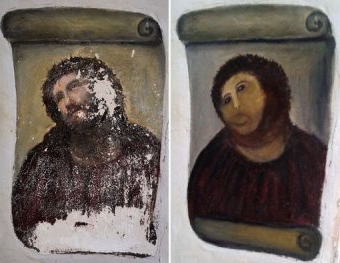
Though we are an aggregator blog (providing links to content elsewhere) on all other days, on Mondays we have only original writing by our editors and guest columnists. Each of us writes on any subject we wish, and the length of articles generally varies between 1000 and 2500 words. Our writers are free to express their own opinions and we do not censor them in any way. Sometimes we agree with them and sometimes we don’t.Below you will find links to all our past Monday columns, in alphabetical order by last name of the author. Within each columnist’s listing, the entries are mostly in reverse-chronological order (most recent first).
by Mike O’Brien


The top photo was taken by me at a park called Lido in Brixen, South Tyrol, on the 20th of October last year. It reminded me of the painting “A Sunday Afternoon on the Island of La Grande Jatte” by Georges Seurat. (I’ll put a photo of that painting in the comments so you can see what I mean.) On October 20th this year I happened to be in the same place and tried to take the same photo again, the one at the bottom here. When I got home and compared it to the old photo, I was surprised by how similar they were and how I had managed to stand in the exact same spot as last time. The light is a bit different, and the people, but much has remained the same, which is reassuring in some way.
by Carol A Westbrook
 Men have always wanted to fly to the moon and stars. We wanted to find out what was up there on the moon and planets? Was it heaven? Were there angels? Or were these worlds inhabited by strange creatures who built canals? We looked up, we used telescopes. We watched the stars and charted their movements. But we wanted to do more than look and imagine; we wanted to go up there and see for ourselves? The birds could fly, why couldn’t we?
Men have always wanted to fly to the moon and stars. We wanted to find out what was up there on the moon and planets? Was it heaven? Were there angels? Or were these worlds inhabited by strange creatures who built canals? We looked up, we used telescopes. We watched the stars and charted their movements. But we wanted to do more than look and imagine; we wanted to go up there and see for ourselves? The birds could fly, why couldn’t we?
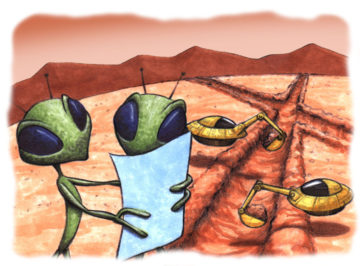
But man remained earthbound until that historic day in 1903, when the Wright brothers left the ground at Kitty Hawk in the first manned, self-propelled flight. The age of flight began. Barely fifty years later, Sputnik was launched into space. Ten years later man walked on the moon. We watched the moonwalk with great excitement and anticipations. We knew it was now just a matter of time before we ourselves would get our own chance to do the same—to experience weightlessness of space, to see the moon up close, to walk on the surface of the moon.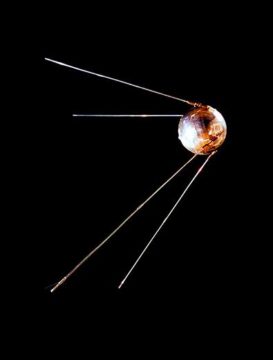
So we waited. And waited. We dreamed about space travel, wrote books and made movies about it. “Fly Me to the Moon,” Frank Sinatra sang for us. (Click here for the song.) We grew old, and we still waited. The longer we waited, the further our dreams seem to get. Initially there were plans for more flights to the moon and perhaps a settlement, followed by exploration of Mars. Instead, NASA launched the International Space Station, or ISS.Travel to the ISS was to be by the space shuttle. Maybe we could hitch a ride and go along, too? But after the tragic crash of the Space Shuttle in 1986, in which everyone aboard perished, including the first civilian passenger, Sharon McAuliffe, NASA said, “no more civilians in space.” The shuttle project was cancelled. Read more »
by Rafiq Kathwari
Owowwowwow! What timing, Joy said, kissing my forehead. I was leaning against the island in her kitchen, my arms cradled, eyes lowered to my worn-out sneakers as she sautéed fillet of sole in the juice of tangerines.
Later, my sneakers squeaked when I dragged my feet home in an October drizzle, my sight dim, thinking at least she didn’t reject my marriage proposal completely, only “for the time being.” It was an impulsive moment, a reckless proposal.
I tossed and turned all night, hoping that when the “time being” elapsed, Joy would say, “no.” My body said sleep, but my mind was in turmoil. What did I really know about Joy? Could I list three good reasons why I wanted to marry her? Was I driven by the need for love? Was I afraid of keeping my own company? Did I have a commitment phobia, as my friends said I did? And did this phobia stalk me in my relationships? Was I looking for a mother? That gave me pause. It would be unfair to Joy or to any other woman I might meet. Read more »
by Pranab Bardhan
All of the articles in this series can be found here.
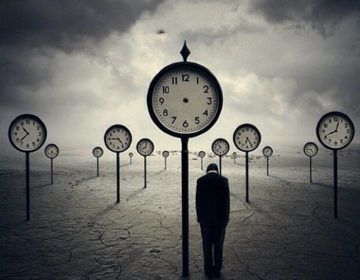 My Presidency College friend Premen was always a voracious reader, particularly of political, social and military history. He often told me of new books in those areas and sometimes persuaded me to read them. But by the time I saw him again in Cambridge, I could see his slow turn from his fascination with Trotsky to Mao. This was in line with a general movement among the young in the European left around that time. Jean-Luc Godard’s 1967 film La Chinoise captured the restless energy of politically-activist students in contemporary France, foreshadowing the student rebellions in a year or so.
My Presidency College friend Premen was always a voracious reader, particularly of political, social and military history. He often told me of new books in those areas and sometimes persuaded me to read them. But by the time I saw him again in Cambridge, I could see his slow turn from his fascination with Trotsky to Mao. This was in line with a general movement among the young in the European left around that time. Jean-Luc Godard’s 1967 film La Chinoise captured the restless energy of politically-activist students in contemporary France, foreshadowing the student rebellions in a year or so.
A Chinese student in Premen’s hostel provided him with copies of official publications from Beijing, which Premen read with interest, but I saw mainly propaganda in them. He and I used to go to China-centric evening talks, say by Joan Robinson (praising the new anti-bureaucratic directions for the world’s left being shown by the Cultural Revolution) or by Joseph Needham (on the great strides in Chinese history in science and technology). Premen directed me to Needham’s multi-volume magnum opus Science and Civilization in China, but I could manage only a partial skimming. I was, however, attracted by what is now known as the ‘Needham Question’: why has the West overtaken China (and also India) in science and technology, despite their earlier successes? By now there have been several attempts to answer this question by historians and economists, but none of which I have found fully satisfactory. Read more »
by Martin Butler
 Imagine a world where the prison population was a rough mirror of wider society. In such a world there is a similar spread of rich and poor, highly educated and less educated, as well as a roughly equal proportion of men and women and those from deprived areas and well-off areas. The proportions of different ethnic groups reflect those in the surrounding society, as does the age profile, and having a mental health problem bears no relation to the likelihood of being in prison, neither does being in care in any systematic way increase the chances of ending up as a young offender. In addition, there seems to be no pattern from year to year. Some years there are low levels of crime and in other years the crime rate jumps for no discernible reason. The random nature of the prison population is recognised as providing good evidence for the belief that criminality is simply a result of individuals using their free will to make bad decisions, since we are all equally capable of this. After all, it could be argued, everyone is equal in possessing free will, and crime is a conscious and fully autonomous act in which social and psychological conditions play little part. Anyone, the argument goes, can be selfish or greedy and so succumb to criminality. In such a world, the general view is that prison exists to teach these individuals the error of their ways by providing them with extra motivation to retain their self-control next time temptation beckons.
Imagine a world where the prison population was a rough mirror of wider society. In such a world there is a similar spread of rich and poor, highly educated and less educated, as well as a roughly equal proportion of men and women and those from deprived areas and well-off areas. The proportions of different ethnic groups reflect those in the surrounding society, as does the age profile, and having a mental health problem bears no relation to the likelihood of being in prison, neither does being in care in any systematic way increase the chances of ending up as a young offender. In addition, there seems to be no pattern from year to year. Some years there are low levels of crime and in other years the crime rate jumps for no discernible reason. The random nature of the prison population is recognised as providing good evidence for the belief that criminality is simply a result of individuals using their free will to make bad decisions, since we are all equally capable of this. After all, it could be argued, everyone is equal in possessing free will, and crime is a conscious and fully autonomous act in which social and psychological conditions play little part. Anyone, the argument goes, can be selfish or greedy and so succumb to criminality. In such a world, the general view is that prison exists to teach these individuals the error of their ways by providing them with extra motivation to retain their self-control next time temptation beckons.
It is instructive to ask how this imaginary world differs from, and is similar to, the actual world in which we live. What implications can we draw from the contrast? The obvious difference is that our prison population is nothing like that of the imaginary world, and I hardly need to go through the statistics that show how it’s very much not a cross-section of wider society with regards to gender, mental health, education level, family background, ethnicity, social deprivation, and so on. Read more »
by Jochen Szangolies
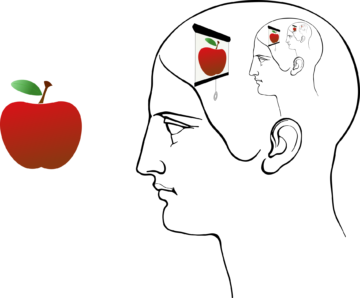
Turn your head to the left, and make a conscious inventory of what you’re seeing. In my case, I see a radiator upon which a tin can painted with an image of Santa Claus is perched; above that, a window, whose white frame delimits a slate gray sky and the very topmost potion of the roof of the neighboring building, brownish tiles punctuated by gray smokestacks and sheet-metal covered dormers lined by rain gutters.
Now turn your head to the right: the printer sitting on the smaller projection of my ‘L’-shaped, black desk; behind it, a brass floor lamp with an off-white lampshade; a black rocking chair; and then, black and white bookshelves in need of tidying up.
If you followed along so far, the above did two things: first, it made you execute certain movements; second, it gave you an impression of the room where I’m writing this. You probably find nothing extraordinary in this—yet, it raises a profound question: how can words, mere marks on paper (or ordered dots of light on a screen), have the power to make you do things (like turning your head), or transport ideas (like how the sky outside my window looks as I’m writing this)? Read more »
by Joseph Shieber

Given the seemingly daily stories of misinformation and its often tragic consequences, it can be tempting to search for ways to limit the impact of the Internet and social media outlets in contributing to the spread of misinformation. In a recent preprint, “The Epistemology of the Internet and the Regulation of Speech in America,” Brian Leiter, the Karl N. Llewellyn Professor of Jurisprudence at the University of Chicago Law School and a prominent blogger on both the philosophical and legal scenes, offers not only a very clear-headed diagnosis of the current landscape of online and media-driven misinformation, but also proposes remedies to improve our information landscape.
While Leiter’s discussion provides a useful — indeed necessary — way for thinking about the challenges posed by media outlets and the Internet alike, I will suggest that his focus on the Internet blinds him to the real culprit. Indeed, it is traditional media — and, in particular, Fox News — that is largely to blame for our current situation. I will suggest that this makes remedying the problems of our contemporary information environment at once easier, but also perhaps less exciting. Read more »
look out your window, the moon is huge!

though not bigger than life, smaller than that
but big enough to have life take a look
and admire a midnight sun with hint of rouge
upheld in a mosh-pit of trees bare limbs a dark mesh
beyond a field upon a sky of blue-grey steel which
as long as nights last and days begin
will be the place this moon plays stage rear
then up and front as it climbs a starry scrim
and down again as life applauds before it disappears
Jim Culleny
11/16/13
by Derek Neal
 I went to France to study abroad as a 20-year-old in my third year of university. At the time, I had been studying French for eight years, but when I arrived in France, I found I was unable to express myself beyond the most rudimentary statements, and I couldn’t understand the rapid-fire questions sprayed at me by curious French students. After attending a dorm party that first weekend, I realized the gap between myself and the French students was simply too large to bridge; the most I could hope for from them was small talk and polite chatter—deep, meaningful conversation, and thus friendship, would be impossible.
I went to France to study abroad as a 20-year-old in my third year of university. At the time, I had been studying French for eight years, but when I arrived in France, I found I was unable to express myself beyond the most rudimentary statements, and I couldn’t understand the rapid-fire questions sprayed at me by curious French students. After attending a dorm party that first weekend, I realized the gap between myself and the French students was simply too large to bridge; the most I could hope for from them was small talk and polite chatter—deep, meaningful conversation, and thus friendship, would be impossible.
Luckily, a group of Italians came to my rescue. Their English skills were more or less equivalent to my French, and their French, while being much better than mine, was at least comprehensible to my ears. I quickly fell in with them, we used French as our lingua franca, and my language ability rapidly improved.
After a few weeks, I stopped translating what I would say from English to French, and then I stopped forming sentences in my head altogether; I just said whatever I felt like saying, often to the amusement of my interlocutors (for whatever reason, foul language doesn’t seem so serious in another language). Eventually, I reached a point that seems to me a benchmark for all language learners: using a word without knowing its equivalent in one’s native language. A word pops into your head and you’re not sure exactly what it means, but it feels like the right word in the right moment, so you say it and judge the appropriateness of its use based on the reaction of the person with whom you’re speaking. The conversation continues, indicating you’ve made the correct choice. This is, in fact, how most language works, and it’s why learning a language in an educational environment where theory is emphasized over practice can be so difficult. In France, I quickly realized attending courses wouldn’t actually help me learn how to speak French, so I skipped class and went to the cafés instead; my grades suffered, but my fluency increased. Read more »
by Emrys Westacott
 Upton Sinclair famously remarked that “it is difficult to get a man to understand something when his salary depends on his not understanding it.” It is easy to imagine the sort of scenario that illustrates his point. A drug company rep works to increase how often a certain drug is prescribed, putting aside any worries that it is addictive. A video game designer seeks to increase the number of hours young players spend hooked on a game, not thinking about the impact this might have on their education.
Upton Sinclair famously remarked that “it is difficult to get a man to understand something when his salary depends on his not understanding it.” It is easy to imagine the sort of scenario that illustrates his point. A drug company rep works to increase how often a certain drug is prescribed, putting aside any worries that it is addictive. A video game designer seeks to increase the number of hours young players spend hooked on a game, not thinking about the impact this might have on their education.
Yet the current situation in the US regarding vaccine hesitancy–or, more accurately, vaccine resistance–seems to offer some striking examples that call Sinclair’s claim into question. A number of states, including New York State, have mandated vaccinations against covid for health care workers. Those who refuse to get the vaccine face termination. Some of these workers have nevertheless chosen to forfeit their jobs, income, and benefits rather than be vaccinated. Their salary depends on them not allowing their judgement to be influenced by the anti-vaxxers; yet they appear to have fallen under the influence just the same. Read more »
by Brooks Riley
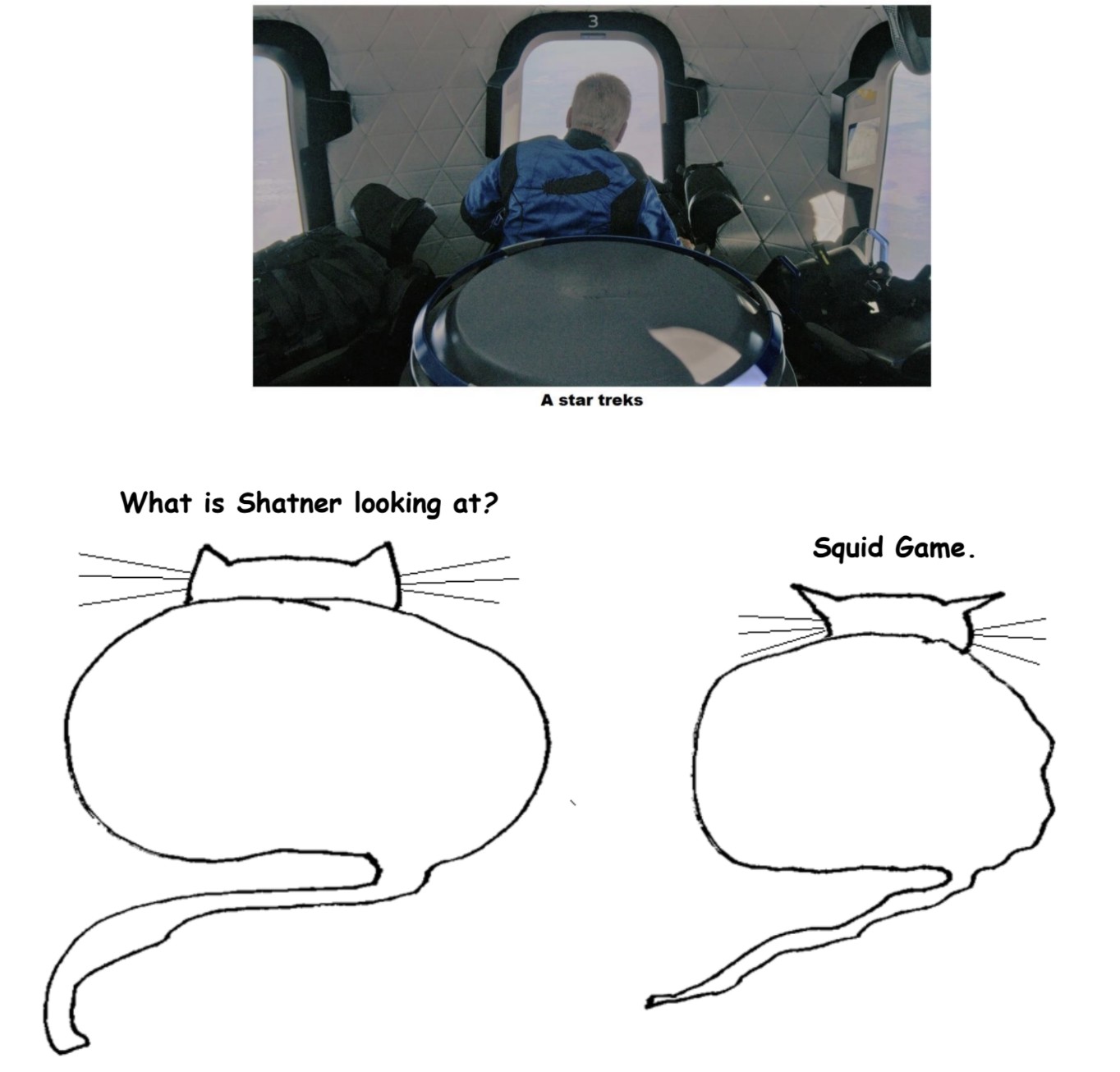
by Tamuira Reid
He’s easy to spot.
Signature knee-length yellow raincoat, with a stenciled peace sign on the back of it, that he wears irregardless of the weather. Army green cargo shorts with wrappers erupting from every pocket. White sneakers with orthopedic inserts to help him manage his slippery gait. The Roblox backpack from two Christmases ago, packed with sketch pads and sharpened pencils, an eraser to smudge and soften the lines of his alien bad guy drawings; one sandwich bag filled with gummy bears in case of an emergency snack attack situation (of which there have been many); a love letter from a classmate he’s too preoccupied to love back.
Ollie Duffy, all eleven years of him, comes hurling towards me where I stand, back against a tree, off to the side, where I hide from the uncomfortable conversations that waiting parents are subjected to. Where I drink the last of my coffee in parental anonymity. Ollie Duffy, the kid always falling out of the frame, sliding on giant orthopedic shoes, coke-bottle glasses magnifying his eyes to the point of ridiculousness. In a sea of wayward school kids at pick-up, Ollie Duffy is the tsunami.
He hugs me, always. He asks for food, always. And halfway down Christopher Street, after he’s inhaled his 99 cent bodega chips, is when I get the “How was your day, mom?” Always.
I know he’s not listening because listening is hard. Because grown-up shit is boring. Because Christopher Street is so sparkly, right? We move in-synch and at a fast clip, weaving in and out of pedestrian traffic, our shared skill set. I hold onto his hand, and he lets me. For now. Read more »
by Cynthia Haven
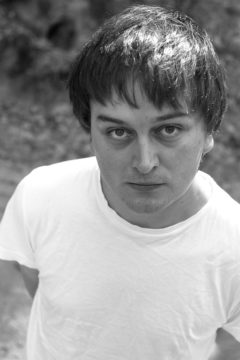 “People in the know know him.” That’s what his English translator, Peter Constantine, told me. Grzegorz Kwiatkowski is becoming an important poetic voice from today’s Poland, with six volumes of poetry, and translated editions on the way. His translator added, “He has a strange poetic voice, very original and stark.”
“People in the know know him.” That’s what his English translator, Peter Constantine, told me. Grzegorz Kwiatkowski is becoming an important poetic voice from today’s Poland, with six volumes of poetry, and translated editions on the way. His translator added, “He has a strange poetic voice, very original and stark.”
Grzegorz is also a celebrated musician: his internationally known post-rock band Trupa Trupa has been featured on NPR, The Guardian, Rolling Stone, and elsewhere. He has called his music a “vital pessimism” which shows the “rather dark and rather frightening sides of human nature.”
He grew up in Gdańsk, in the shadow of a family marred by his grandfather’s internment in a concentration camp. “My grandfather and his sister were both in the camps. This experience buried them,” he said. “After the war, she went crazy and he became a quiet, hidden man.”
His minimalist poems explore not only conflicted pasts of Eastern Europe – for example, the Nazi euthanasia program – but also the paradoxes of contemporary genocides –Rwanda, for instance. His poems have been perceived as quasi-testimonies, provocative and lyrical utterances delivered by the dead.
Yale critic Richard Deming said that Kwiatkowski’s work “reveals that the unforgettable is also the undeniable. Is it beautiful? I say it is powerfully necessary, unrelentingly direct. I say it burns.” Read more »
by Alexander C. Kafka
The Last Duel is a compelling wide-screen-worthy medieval period drama with exemplary production values — all the more admirable given its disrupted filming schedule during the pandemic. But the project is also a fascinating psycho-cultural phenomenon: a primarily male-helmed Me Too-era exercise in brutal masculine mutual and self-punishment.
The true tale was adapted by Nicole Holofcener, with Ben Affleck and Matt Damon, from a book by Eric Jager. It is directed by the ubiquitous Ridley Scott, who also has a production credit. Damon is a 14th-century French knight, Sir Jean de Carrouges, whose onetime comrade in arms, Jacques Le Gris (Adam Driver), alienates and subverts him, then allegedly rapes Jean’s wife, Marguerite (Jodie Comer). The titular duel will render God’s verdict on whether Le Gris is telling the truth in his profession of innocence. If he is, then not only will Jean perish but so will Marguerite — bound and burned alive. Jean’s corrosive pride, sneaky mother, and trouble conceiving an heir twist the tale further, as do plague-era economics and royal politics.
Reviews have prominently noted The Last Duel’s feminist spin. The script has a three-perspective Rashomon story structure from the viewpoints of the two knights and then of the lady in question, and what fools men be is certainly a key takeaway.
But there’s more going on than that — an expiation, a cathartic self-sacrifice, of the male Hollywood ethos itself. Knights confess, or try to pummel each other into confession. And the film feels like a giant testosterone- and angst-spilling plea for forgiveness. Read more »
by Mir Ali Hosseini
 Most cinemas have been open for some time where I live. After having been indoors in restaurants and bars a few times, I was slowly reintroduced to the pleasures of sharing a space with strangers. And finally it felt like the right moment to, once again, set foot in a cinema.
Most cinemas have been open for some time where I live. After having been indoors in restaurants and bars a few times, I was slowly reintroduced to the pleasures of sharing a space with strangers. And finally it felt like the right moment to, once again, set foot in a cinema.
After about one and a half years, I wanted my return to cinema to be epic — literally epic. Dune’s synopsis seemed to promise exactly that:
A mythic and emotionally charged hero’s journey, Dune tells the story of Paul Atreides, a brilliant and gifted young man born into a great destiny beyond his understanding, must travel to the most dangerous planet in the universe to ensure the future of his family and his people.
So, despite being unfamiliar with Frank Herbert’s novel Dune (1965), I chose to watch Denis Villeneuve’s 2021 adaptation.
I wanted my first post-lockdown cinema experience to be a sheer re-enchantment with the silver screen. So, not only did I pick a film which could surprise me the most, but also, I intentionally avoided reading about it. Even though I never read any reviews before watching the film, all the review titles I came across seemed to indicate that a great work, maybe even a masterpiece, is awaiting my presence in cinema.
Well, Dune did surprise me — though in a way which I wasn’t expecting. Read more »
by Pranab Bardhan
All of the articles in this series can be found here.
 Among other members in the Economics faculty at Cambridge, there was the great Italian scholar, Piero Sraffa. He was administratively the professor-in-charge of us, graduate students. So I met him a few times in that connection, but never quite intellectually engaged with him, partly because by that time he was a bit reclusive and did not teach classes or attend seminars; but also because I was so much in awe of his reputation in areas where I had little expertise. His work in Economics was path-breaking in taking price theory to its classical roots, he had an influence on Wittgenstein’s philosophy (which the latter acknowledged), and he was a close friend of the Italian Marxist thinker, Antonio Gramsci (when the latter was jailed by Mussolini in 1926, Sraffa used to regularly supply him with books and even pen and paper, with which Gramsci wrote his famous Prison Notebooks, procured by Sraffa from the prison authorities after Gramsci’s death in 1937).
Among other members in the Economics faculty at Cambridge, there was the great Italian scholar, Piero Sraffa. He was administratively the professor-in-charge of us, graduate students. So I met him a few times in that connection, but never quite intellectually engaged with him, partly because by that time he was a bit reclusive and did not teach classes or attend seminars; but also because I was so much in awe of his reputation in areas where I had little expertise. His work in Economics was path-breaking in taking price theory to its classical roots, he had an influence on Wittgenstein’s philosophy (which the latter acknowledged), and he was a close friend of the Italian Marxist thinker, Antonio Gramsci (when the latter was jailed by Mussolini in 1926, Sraffa used to regularly supply him with books and even pen and paper, with which Gramsci wrote his famous Prison Notebooks, procured by Sraffa from the prison authorities after Gramsci’s death in 1937).
Other faculty members with whom I wish I had more interaction were Nicholas Kaldor, Maurice Dobb (I did tell him that his book had helped me come to Economics), and Luigi Pasinetti (many years later when I gave the first Luca d’Agliano Lecture in Development Economics in Turin, Luigi called me from Milan, which was a pleasant surprise, and we had a long talk). Both Kalpana and I saw quite a bit of two young faculty members, one was Geoff Harcourt (the friendly Australian) and Ajit Singh, an astute Marxist academic and organizer (the leftists, including some gorgeous upper-class British women, doted on him). Read more »
by Michael Liss
Eye of newt and toe of frog, Wool of bat and tongue of dog…

It could have worked. It almost did. It may in the future.
A lovely little coup attempt by Former President Trump and his posse. A little violence. A sprinkling of eager state and local “public servants” who planned to please the then-President by spinning gossamer tales of phantom voters and secret shredders. Brigades of lawyers, a few absolute kooks, but others both well-placed in government or in influential positions, and deadly serious. This last group included 17 State Attorneys General who looked in their mirrors each morning and saw “Future Really Important Republican Persons” staring back at them.
Let’s not back away from the obvious. January 6th wasn’t a single, isolated moment of acting-out by an angst-driven set of peaceful patriots driven mad by the loss of their idol. It was the punctuation mark on an intense stretch of unrelenting pressure by Trump and his allies to crush the democratic process. That the Ship of State eventually stayed afloat, that people, including many Republicans, pushed back enough to block Trump’s power grab, is to its and their credit. But, to quote Star Trek’s Scottie when the Enterprise was under assault, “I dannae if she can take any more, Captain!”
The more we learn, the worse it gets. Let’s start with 45. I don’t know whether Donald Trump actually believes much of what he says, but, late in life, he’s found a role he can play where accountability doesn’t exist. He knows his followers love a good show. He knows the media, even the so-called liberal media, would rather cover someone colorful and newsworthy than old, boring Joe Biden. And, through all of it, it doesn’t matter what the 1/6 Committee, or investigative reporters, or state prosecutors might find. He knows he’s untouchable. Others may pay a price, but not Trump. Read more »
by Jeroen Bouterse
It’s my favorite topic of the year, I tell the kids, before scanning my conscience for signs that I have just lied to them. No, this feels about right, and in any case, they didn’t need my reassurance: after a dry unit about ratios, at my mention of the word “probability” I can practically hear the sound of neurons firing. Whether they know of any contexts in which chance turns up? Boy, do they. My twelve-year old students inform me about dice, cards, spinners, lotteries, casinos, about your chances of survival in Squid Game, about unearthing rare minerals in Minecraft, and about whether the stuff you want to buy is actually in stock because sometimes they run out and there’s no telling in advance when. Also the weather.
I love introducing them to the math of probability precisely because it is a topic that they have already thought about so much, but that I know many of them have incoherent intuitions about. Not that I don’t, of course, but I am a little bit ahead of them and I know from experience what I am working with. Somebody will opine that the chance that it’s going to rain next month is “fifty-fifty” because it either will or it won’t. Somebody will say that there is a 1/7 chance that someone’s favorite day of the week is Thursday. Somebody will reason that since the highest sum you can roll with two D6-dice is a 12, the chance you roll a 10 is 1 in 12, which…
Oh wait, is it? Anyway, you get the point: the process feels properly Socratic, taking slightly muddled concepts that students already feel strongly about, and providing the right nudges to make them reconsider some of those concepts and make others click together. It is a significant source of satisfaction every year to see just how fast ‘the group’ moves from guessing that a sequence of three coin flips has six possible outcomes (unless it can land on its side, which they also unerringly point out), to calculating the number of four-digit pin codes where all the digits have to be different.
It’s also becoming a little predictable, now that I teach this level for the third time. Though I was surprised to learn that this cohort of young teenagers had already binged Squid Game, I don’t generally expect them to say anything unexpected about mathematics. Until, last week, we were classifying certain things according to likelihood. I always include an apodictic claim like “1 + 1 = 2” in the mix, and students usually say that its probability is, indeed, 1. This time, I wondered out loud why we are so sure of this. Read more »